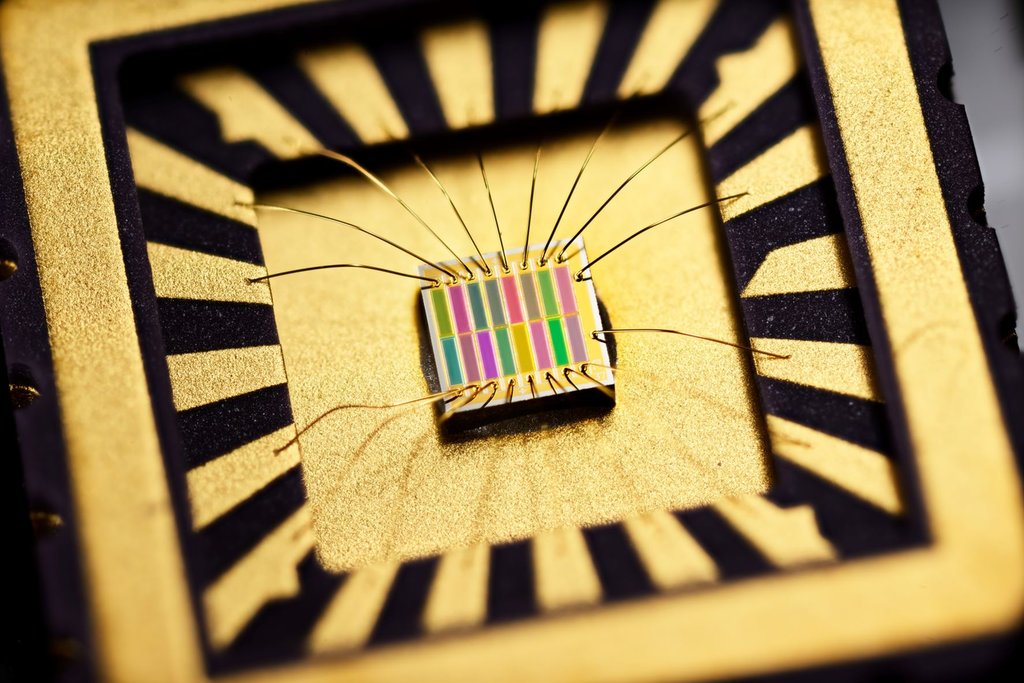8
Sensing the invisible at the Dutch Design Week 2022
During the largest design event in Northern Europe, TU/e’s photonics research was presented to tens of thousands of visitors from home and abroad in an expo at Strijp-S. Under the overarching theme ‘Sensing the invisible’, two photonics projects were shown during the Dutch Design Week 2022.
With Drivers of Change on the Ketelhuisplein in the center of the Dutch Design Week from 22 to 30 October 2022, Eindhoven University of Technology offered a glimpse into the way the world’s future is being built. In five unique glass containers: themes, solutions and ways of thinking were presented, that represent design in the broadest sense of the word. For photonics, that went from a miniature spectral sensor to the possibilities of counting the amount of viral particles in your blood.
Near-infrared sensor
The human eye is an amazing sensor. Three photoreceptor cells convert visible light into signals for different colors. Our brain turns these into color impressions that provide information: a red strawberry is ripe, a green one isn’t. But there’s also light that our eyes can’t see, such as the reflection of near-infrared light. This type of light’s reflection is what provides the most useful information about the chemical composition of food, drugs or other organic materials. The tiny near-infrared sensor that was on display during the expo captures invisible light and converts it into useful information. Many of the current generation of spectrometers can only be used in labs because of their size and costs. The chip TU/e presented is robust, portable and enables many different applications; from checking drug composition to monitoring fruit and vegetables or testing water quality.
Biosensors that count
Thanks to the corona (self)-test, everyone knows what a biosensor is. Molecules in a sensor recognize other biological substances and produce a signal. But they’re not only found in healthcare, they’re also commonly used in industry, food production, or even in nature. The covid-tests showed us that biosensors can be quick and small. What’s still missing however is a quantitative result; not only knowing whether you have it, but for how long, at what stage, how mild or how extreme. Add to this the so-called ‘function of time’: multiple measurements consecutively in a given time. A sensor that already does this is the glucose sensor that diabetics wear on their skin. TU/e researchers are currently working on novel quantitative biosensors with a function of time. It may not be long before we’ll all be wearing a biosensor which keeps a close eye on our health.
